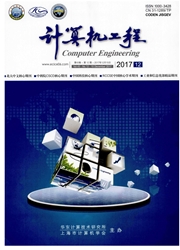

 中文摘要:
中文摘要:
以往对信息论安全的消息传输(sMT)协议的研究总假定有些信道完全保密且没有任何噪音,不能反映实际应用情况。为此提出敌手信道模型,不仅允许攻击者能完全控制t〈n条连接Alice和Bob的信道,还允许他通过引入噪音来篡改其他n—t条信道中的部分消息。在该模型中分析常用的纠错码无法直接用于消息恢复的原因,并利用已有的信息协商协议设计一个敌手信道模型中的SMT协议。相比于以往的协议,该协议只增加很小的计算和通信开销,且具有最优的轮复杂性。
 英文摘要:
英文摘要:
The existed model on information-theoretically Secure Message Transmission(SMT) assumes t〈n of the channels connecting Alice and Bob can be controlled by a computationally unbounded adversary, while the rest n-t channels are completely secure and no noise. However, the existence of channels without noise is only reasonable in ideal scenarios. For this reason, a model, called adversarial channel model, is introduced to study the SMT problem. The adversary, under the new model, is not only allowed to control any t〈n channels, but also allowed to partially affect the rest n-t channels by introducing noises at her will. The cause that general error-correcting codes may fail to recover messages is analyzed, and then by the help of information reconciliation protocol, a new SMT protocol is presented, which is efficient in both computational and communicational complexity, and optimal in round complexity.
 同期刊论文项目
同期刊论文项目
 同项目期刊论文
同项目期刊论文
 期刊信息
期刊信息
